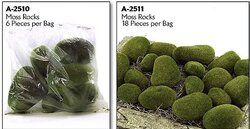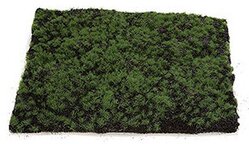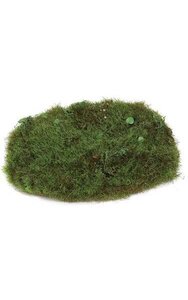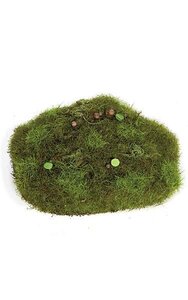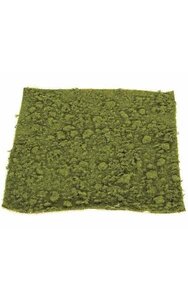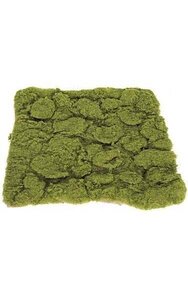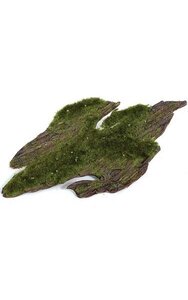-
Tropical Artificial Palm Trees > Plants>Thatch >Birds
- Pre-Lit Artificial Palm Trees
-
Interior Tropical Palm Artificial Trees
- Deco Artificial Areca Palms
- Lavish Faux Golden Cane Palms
- Tropical Artificial Paradise Palms
- Deco Faux Banana Palms
- Tropical Artificial Coconut Palms
- Deco Artificial Cycas Palms
- Artificial Roebellinii Palms
- Tropical Artificial Phoenix Palms
- Deco Artificial Fishtail Palms
- Deco Faux Lady Palms
- Zen Faux Bamboo Trees
- Flowing Artificial Fountain Palms
- Deco Faux Parlour Palms
- Tropical Artificial Travelers Palm
- Deco Faux Sago Palm Tree
- Tropical Artificial Date Palms
- New Faux Grass Palm Tree
- Colorful Flowering Artificial Tropical Palms
- Stylish Faux Kentia Palms
- Outdoor Tropical Artificial Palm Trees
- Preserved Palm Trees
- Canvas Palm Trees
- Tropical Artificial Plants
- Tropical Artificial Birds
- Tiki Bar & Thatch Umbrella
- Canvas Palms & Plants
- Faux Living Walls
- Fire Retardant Artificial Greenery
-
Outdoor Artificial Palm> Trees> Topiary>Plants
- Outdoor Artificial Decorative Trees
-
Outdoor Faux Bushes and Ferns
- Outdoor Fancy Fern Plants
- Durable Artificial Select Juniper plant
- All- weather Deco Lirope Plant
- Exterior Magnificent Mahonia Bushes
- Beautiful Faux Exterior Boxwood Plants
- Exterior Artificial Deco Rhododendron Plants
- Elegant Artificial Outdoor Flowering Plants
- Euro Artificial Exterior Cypress Trees
- Polyblend Artificial Outdoor Perfect Polycaise Plants
- Magnificent OutdoorArtificial Mountain Laurel Plants
- Grand Exterior Artificial Taxus Yew Plants
- Graceful Weather-Proof Podocarpus Plant
- Tropical Faux Palm Trees and Palm Bushes
- Outdoor Garlands, Branches and Vines
- Outdoor Artificial Flowering Plants and Vines
- Outdoor Artificial Tropical Plants
- Outdoor Artificial Hedges
- Outdoor Artificial Landscaping Grass
- Outdoor Faux Topiary
- Preserved and Artificial Moss
-
Artificial Cactus Succulents
- Faux Finger Cactus
- Faux Life Like Plastic Mexican Cactus
- Faux Life Like Plastic Small Cacti & Succulent
- Faux Life Like Plastic Saguaro Cactus
- Faux Plastic Prickly Pear Cactus
- Stylish Artificial Column Cactus
- Luminous Lighted Faux Cactus
- Natural Touch Life Like Cactus
- Artificial Desert Agave
- Succulent Wreaths
- Fire Retardant Cactus
- Wall Floor Artificial Grass Mats>Grasses>Bark>Rock
-
Artificial Trees >Topiary> Bonsai
-
Exquisite Decor Artificial Topiaries
- Pvc Pine Topiaries with or without lights
- Life Like Artificial Cone & Ball Topiaries
- Faux Flowering Topiary
- Decorative Rosemary Topiary
- Exquisite Spiral Topiary
- Faux Ball Tree Topiaries
- Preserved Ball, Spiral, Cone Topiary
- Table Top Topiaries
- Artificial Juniper Topiaries
- Artificial Oxford Ivy Topiaries
- Artificial Pittsburgh Ivy Topiaries
- Artificial English Ivy Topiaries
- Artificial Cone Topiaries
- Artificial Boxwood Topiaries
- Artificial Elegant Exterior Topiaries
- Custom Made Letter Artificial Boxwood Topiaries
- Preserved Zen Bonsai
- Enchanting Ball Topiary Artificial Trees
- Captivating Artificial Bamboo Trees
- Designer Collection Artificial Trees
- Euro Collection Olive & Fig Artificial Trees
- Oriental Ming, Lace , Finger Aralia Artificial Trees
- Faux Ficus Trees
- Fall Artificial Trees In Multiple Color Choices
- Faux Flowering Trees
- Lavish Artificial Fruit Trees
- Fancy Ice Glitter & Lighted Artificial Trees
- Oriental Mini Japanese Maple Artificial Trees
- Everlasting Pine Artificial Trees
- Preserved Eucalyptus Trees
- Outdoor Artificial Trees
- Custom Giant Artificial Trees
-
Exquisite Decor Artificial Topiaries
- Fabulous Faux Flowering Collection
-
Faux Palm Fronds >Tree > Twig Branches
- Preserved Palm Fronds
- Holiday Decorative Branches
- Tropical Faux Palm Branches
- Outdoor All Weather Branches
- Oriental Artificial Bamboo Branches
- Faux Maple Branches
- Tuscan Faux Olive Branches
- Life Like Aralia Branches
- Faux Ficus Branches
- Artificial Oak Branches
- Curly Willow Selections
- Artificial Laurel Branches
- Faux Podocarpus Branches
- Artificial Birch Branches
- Faux Flowering Branches
- Artificial Pine Branches
- Faux Ginko Branches
- Artificial Cottonwood(Aspen) Branches
- Faux Large Leaf Banyon, Bo Ficus,Alder
- Artificial Sycamore Branches
- Vivid Mixed Variety Artificial Branch Collection
- Custom Made To Order Branches
-
Lush Faux Greenery and Decor
- Hanging Silk Plants
- Wreaths and Swags
- Silk Potted Arrangements
- Fabulous Faux Ferns
- Artificial Garlands, Vines & Bushes
- Table Top, Small Gift, Home Accents
- Faux Floor Plants
- Small Artificial Accent Plants and arrangements
- Decorative Artificial Accent Plants
- Tree Root (Jungle Vine) Selections
- Artificial Cattail Selections
- Artificial Lily Pad Selections
- Faux Magnolia Selections
- Artificial Papyrus Selections
- Faux Eucalyptus Selections
- Fall Harvest Foliages & Pumpkins
-
Artificial Tropical Plants
- Artificial Crotons
- Faux Agave
- Artificial Guzmania
- Faux Banana Plants
- Faux Bird of Paradise
- Artificial Vriesea Splendens
- Exotic Artificial Tropical Plants
- Faux Aechmea Bromeliad
- Artificial Anthurium Plants
- Faux Dracaena Plant
- Exotic Artificial Papyrus
- Faux Bromeliad Plant
- All Weather Fade Resistant Tropical Plants
- Artificial Fruits Vegetables Herbs
- Planters Urns Columns Deco statues >Fountains
- Preserved Collection
- Artificial Boxwood Collection
- Silk Plant Cleaner> Moss Planter Toppers
- Halloween Faux Fall Decorations
-
Artificial Christmas Trees> Garlands>Holiday Decor
- Christmas Candelabrums
- Christmas Artificial Wreaths With/Without Lights
- Christmas Holiday Hanging Baskets
- Christmas Garlands With/ Without Lights
- Artificial Christmas Swags
- Sparkle Lite LED Crystal Trees> Lighting Decor
- Christmas Santas
- Holiday Merry Christmas Door Wall Decor
- Holiday Decorated Lamp Post with LED Lights
-
Artificial Christmas Trees
- LED Pre-Lit Artificial Christmas Trees
- Worry Free ALL LIT Artificial Christmas Trees
- Ultra Real Feel Artificial Christmas Trees
- Full Size Artificial Christmas Trees With or Without Lights
- Pencil Size Artificial Christmas Trees With or without lights
- Slim Size Artificial Christmas Trees with or without Lights
- Pre-lit Artificial Flocked Christmas Trees
- Pick Your Color Artificial Christmas Tree
- Colored Tinsel Artificial Christmas Trees
- Silver and White Artificial Christmas Trees
- Holiday Merry Christmas Door Wall Decor
- Flocked Colored Artificial Christmas Trees
- Flat Back Artificial Christmas Pine Trees
- Giant Size Artificial Christmas Trees With or without lights
- Multi - Colored Lighted Artificial Christmas Trees
- Holiday Accents & Decor
- Upside Down Umbrella Artificial Christmas Trees
- Display Trees>Alpine Trees
- Christmas Deco Topiaries
- Pre-Lit Artificial Palm Trees
- Glitter Ice Collection
- Christmas Artificial Cactus
- Christmas Tree Ornaments and Trimmings
- Holiday Accent Foliages> Poinsettias
- Swags >Table Top Trees> Topiaries
- Christmas Berry Collection
- Holiday Decorative Branches
- Holiday Grass Mats
- Artificial Christmas Tree Lights
- Christmas Tree Stands >Storage bags
- Potted Faux Silk Arrangements
- Rugs and Wall Decor
- Furniture
- Patriotic Wreaths and Topiary
- Special Offers
- Silk Trees
Preserved and Artificial Moss
Sort by:
Recommended

Decorating with preserved and artificial moss can add a touch of nature and texture to your indoor or outdoor spaces. Whether you're looking to create a mossy centerpiece, a moss-covered wall, or incorporate moss into other decorative elements, here are some tips to help you get started:
Choosing the right type of moss:
Preserved moss: Preserved moss is real moss that has undergone a preservation process to maintain its natural appearance and texture. It is available in various types, such as sheet moss, cushion moss, and pole moss. Preserved moss requires minimal maintenance and can last for a long time indoors.
Artificial moss: Artificial moss is typically made from synthetic materials like polyester or foam. It mimics the look of real moss and is a good option if you're looking for a long-lasting and maintenance-free solution.
Selecting the appropriate location:
Indoor spaces: Preserved moss and artificial moss can be used to enhance the ambiance of indoor spaces such as living rooms, bedrooms, or offices. Consider using them in terrariums, hanging moss balls, or as wall decor.
Outdoor spaces: While preserved moss is not suitable for outdoor use, artificial moss can be a great choice for outdoor decorations. It can be used on walls, garden sculptures, or outdoor displays.
Creating a mossy centerpiece:
Choose a container: Select a container that suits the style you want to achieve, such as a glass terrarium, a wooden box, or a decorative bowl.
Prepare the base: Line the bottom of the container with pebbles or gravel to create proper drainage.
Arrange the moss: Place preserved or artificial moss in the container, arranging it in an aesthetically pleasing way. You can also combine different types of moss to add texture and variety.
Add decorative elements: Enhance your mossy centerpiece by incorporating other elements like small figurines, stones, or miniature plants.
Choose a suitable surface: Moss can be applied to a variety of surfaces, including wood, foam, or wire mesh. Ensure the surface is clean and dry before attaching the moss.
Apply adhesive: Use an appropriate adhesive such as hot glue, liquid nails, or a moss-specific adhesive to attach the moss to the surface. Apply it in small sections, working your way across the desired area.
Press the moss: Gently press the moss onto the adhesive, ensuring it makes good contact and adheres securely.
Maintain the moss: Depending on the type of moss used, you may need to periodically mist it with water to keep it looking fresh. Follow any specific care instructions provided with the preserved moss.
Remember to consider the longevity and maintenance requirements of both preserved and artificial moss when selecting your materials. Preserved moss requires minimal care but is more delicate and suited for indoor use, while artificial moss provides a durable and long-lasting alternative for both indoor and outdoor applications.






